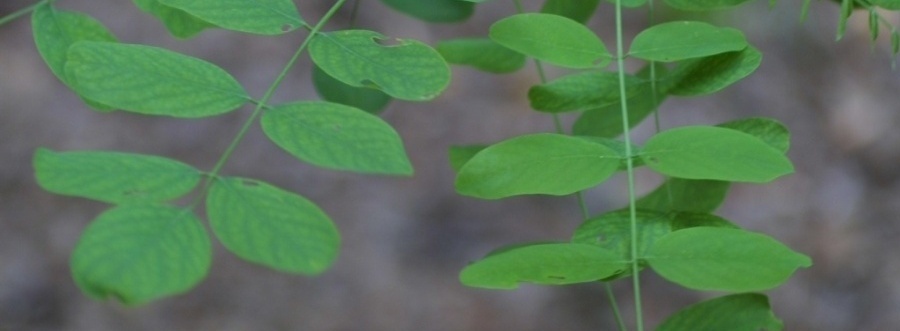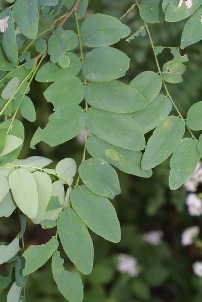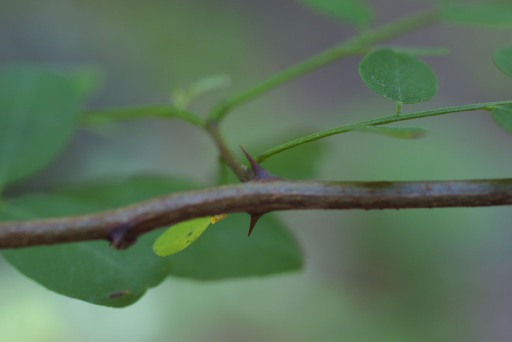
Adaptation
Clearly, the black locust is still alive and kicking today,
but how?
Well first, we have to go back to a time long ago when
plants were making a transition from living underwater to living
on land. In order to do this, there were some challenges
that plants
had to overcome.
· First, since they were no longer submerged in water,
plants had to evolve structures that kept themselves from drying
out.
· Secondly, plants had to discover new ways of acquiring
nutrients, and they also had to find a different way of holding
themselves upright.
· Lastly, plants had to figure out how to deal with the
increase in sunlight they would receive on land.
Steven J. Baskauf, 2003.
Bioimages
 To solve these problems, plants (including the black locust)
have evolved multiple structures to thrive on land
successfully. First, they have a waxy cuticle that holds water
inside the plant to
keep it from drying out. Also, to deal with
the greater amount of sunlight, plants have developed leaves to
increase surface area for photosynthesis. Two other very
important structures that have developed in plants are the xylem
and phloem. These structures provide support for the plant,
allowing it to stand upright, while also allowing for the transport
of sugars and water throughout the plant.
To solve these problems, plants (including the black locust)
have evolved multiple structures to thrive on land
successfully. First, they have a waxy cuticle that holds water
inside the plant to
keep it from drying out. Also, to deal with
the greater amount of sunlight, plants have developed leaves to
increase surface area for photosynthesis. Two other very
important structures that have developed in plants are the xylem
and phloem. These structures provide support for the plant,
allowing it to stand upright, while also allowing for the transport
of sugars and water throughout the plant.
More specifically, the black locust itself has developed a few
special mechanisms of its own in order to survive. One such
structure that has evolved on Robinia pseudoacacia in order to
protect itself are thorns located next to each of the tree’s
white blossoms. This is depicted in the photo below. However, an even more important component in
warding off predators is the toxicity of the tree’s seeds, young
leaves and the inner bark. This is due to three chemicals
called robin, robinine and robitin. But don’t worry, the only
way anoyone could get sick is from ingesting these toxins in
large amounts.

Steven J. Baskauf, 2002
Bioimages
Continue to the Nutrition page!
Return Home